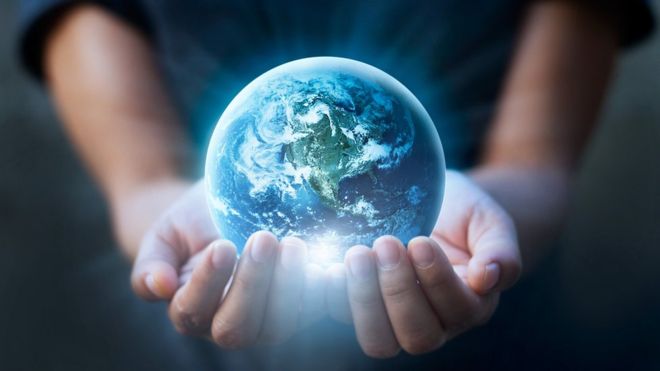
A Healthier Tomorrow – A Healthy Planet – Climate Change – Part 1
Imagine a Healthier Tomorrow
By Alison H. Page
The news was filled in late September with highlights of various “climate strikes” held across the globe. Between September 20th and 27th, in 4,500 locations in 150 countries over 4 million people participated in demonstrations demanding immediate and significant action be taken to slow global warming.
I would like to say we all agree that global warming is a reality, that global warming presents a threat to our ability to live healthy lives, and that this threat needs to be addressed immediately. But we don’t all agree. Climate change has become a divisive, political issue. This is ridiculous. Climate change is a scientific reality. Ninety-seven percent of climate scientists agree that climate-warming trends over the past century are real and that they are extremely likely due to human activities, and most of the leading scientific organizations worldwide have issued public statements endorsing this position. Here are the key indicators of global warming compliments of the United States Government / NASA (https://climate.nasa.gov/):
- Global temperature rise – The planet’s average surface temperature has risen about 1.62 degrees Fahrenheit (0.9 degrees Celsius) since the late 19th century, a change driven largely by increased carbon dioxide and other human-made emissions into the atmosphere. Most of the warming occurred in the past 35 years, with the five warmest years on record taking place since 2010. Not only was 2016 the warmest year on record, but eight of the 12 months that make up the year — from January through September, with the exception of June — were the warmest on record for those respective months.
- Warming oceans – The oceans have absorbed much of this increased heat, with the top 700 meters (about 2,300 feet) of ocean showing warming of more than 0.4 degrees Fahrenheit since 1969.
- Shrinking ice sheets – The Greenland and Antarctic ice sheets have decreased in mass. Data from NASA’s Gravity Recovery and Climate Experiment show Greenland lost an average of 286 billion tons of ice per year between 1993 and 2016, while Antarctica lost about 127 billion tons of ice per year during the same time period. The rate of Antarctica ice mass loss has tripled in the last decade.
- Glacial retreat – Glaciers are retreating almost everywhere around the world — including in the Alps, Himalayas, Andes, Rockies, Alaska and Africa.
- Decreased snow cover – Satellite observations reveal that the amount of spring snow cover in the Northern Hemisphere has decreased over the past five decades and that the snow is melting earlier.
- Sea level rise – Global sea level rose about 8 inches in the last century. The rate in the last two decades, however, is nearly double that of the last century and is accelerating slightly every year.
- Declining Arctic Sea ice – Both the extent and thickness of Arctic sea ice has declined rapidly over the last several decades.
- Extreme events – The number of record high temperature events in the United States has been increasing, while the number of record low temperature events has been decreasing, since 1950. The U.S. has also witnessed increasing numbers of intense rainfall events.
- Ocean acidification – Since the beginning of the Industrial Revolution, the acidity of surface ocean waters has increased by about 30 percent. This increase is the result of humans emitting more carbon dioxide into the atmosphere and hence more being absorbed into the oceans. The amount of carbon dioxide absorbed by the upper layer of the oceans is increasing by about 2 billion tons per year
So, we need to stop the debate. Climate change is real. We are, at least partially, the cause of it. We can do something about it. Responding to climate change involves two possible approaches: Mitigation and Adaptation.
Mitigation – reducing climate change – involves reducing the flow of heat-trapping greenhouse gases into the atmosphere, either by reducing sources of these gases (for example, the burning of fossil fuels for electricity, heat or transport) or enhancing the “sinks” that accumulate and store these gases (such as the oceans, forests and soil).
Adaptation – adapting to life in a changing climate – involves adjusting to actual or expected future climate. The goal is to reduce our vulnerability to the harmful effects of climate change (like sea-level encroachment, more intense extreme weather events or food insecurity). It also encompasses making the most of any potential beneficial opportunities associated with climate change (for example, longer growing seasons or increased yields in some regions).
Like the saying goes, Think Globally, Act Locally. Next month we will discuss what we can do as communities and individuals to address the climate crisis.

